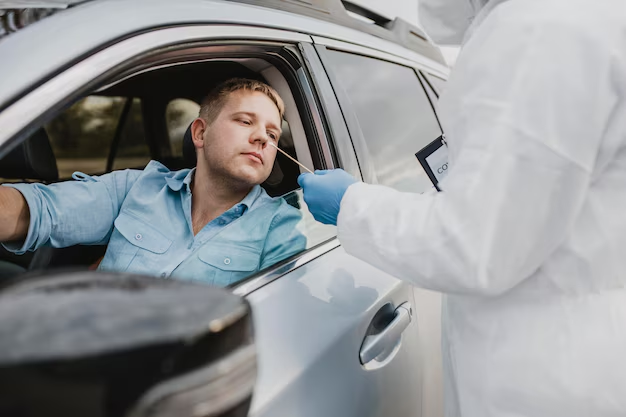How Soon Can You Get Back Behind the Wheel After Cataract Surgery?
Cataract surgery is a pivotal moment for many, often restoring vision that has been gradually dimmed by clouded lenses. If you or a loved one is preparing for or recovering from this procedure, you might be asking, "When can I drive again?" Regaining the confidence and assurance of driving safely is a common concern. This guide will comprehensively explore this topic, providing clarity on recovery timelines, vision requirements, and related considerations to empower you to make informed decisions.
Understanding Cataract Surgery and Recovery
Before diving into when you can drive post-surgery, it's helpful to understand what cataract surgery entails. During the procedure, the cloudy lens of the eye is replaced with a clear artificial lens. This typically enhances vision significantly, but the eyes need time to adjust.
Post-Surgery Recovery Stages
Immediate Recovery: Right after surgery, most people experience mild discomfort, sensitivity to light, and blurred vision as the eye heals. You’ll likely need someone to drive you home.
First Few Days: Vision typically begins to stabilize within a few days. During this phase, it’s vital to follow your eye surgeon’s instructions meticulously to ensure a swift recovery.
First Week: Many patients report significant improvements in vision. However, the degree of healing can vary based on individual health conditions, adherence to post-operative care, and the complexity of the surgery.
General Guidelines on Driving
The return to driving is less about a strict timetable and more about the quality of your vision and comfort. Typically, healthcare professionals suggest not driving until:
- Your Vision Meets Legal Requirements: Ensure adequate vision for driving, which usually requires a certain level of visual acuity in either one or both eyes.
- You Feel Comfortable and Confident: Only resume driving when you feel confident behind the wheel.
- Official Clearance from a Healthcare Provider: It’s often advised to wait until you have a follow-up appointment where your healthcare provider assesses your readiness to drive.
Factors Influencing Your Ability to Drive After Surgery
Vision Quality
For safe driving, you need to have clarity at various distances and handle sudden changes in lighting conditions. Improved vision generally means driving can soon be resumed after surgery, but ensure your vision meets local licensing standards.
Personal Comfort and Confidence
Even if your vision seems adequate, comfort is key. Some patients experience mild symptoms like glare or halos around lights, which can affect driving, especially at night.
Legal Vision Requirements
Driving laws regarding vision can vary significantly. It's necessary to familiarize yourself with your region’s specific vision standards for being behind the wheel. These standards generally involve specific acuity levels and might include peripheral vision checks.
Supporting Information and Context
Aftercare and Follow-Up Appointments
Maintaining proper post-operative care is crucial:
- Medications and Eye Drops: Stay diligent with prescribed eye drops and medications, as they help prevent infection and control inflammation.
- Follow-Up Visits: These are critical for monitoring how well your eye is healing. During these appointments, discuss any lingering symptoms that could affect driving.
Day vs. Night Driving
Driving during different times of the day presents unique challenges:
- Daytime Driving: Easier on your newly healed eyes due to natural light, but always wear sunglasses to protect against UV rays.
- Night Driving: More challenging due to glare from oncoming lights. If you continue to experience issues, it’s prudent to avoid night driving until resolved.
Prioritizing Safety: A Summary
Here’s a quick rundown of key tips to consider before resuming driving:
🚗 Driving Readiness Checklist
- 👁️ Vision Check: Ensure your vision is strong enough for clarity at all necessary distances.
- 🩺 Physician Approval: Obtain your healthcare provider’s consent before getting back on the road.
- 🕶️ Eye Protection: Use sunglasses during daytime driving to manage brightness and glare.
- 💡 Test Conditions: Start driving under familiar and comfortable conditions before progressing to more challenging situations, like night driving.
- 🚸 Confidence is Key: Only drive when you feel fully confident. If unsure, it’s safer to wait.
Engaging thoughtfully in these steps helps ensure your safety and the safety of others on the road.
Additional Considerations for a Smooth Transition
Insurance and Liability
Always inform your insurance provider about your surgery. They may have specific requirements relating to medical procedures, ensuring you stay compliant with coverage terms.
Alternative Transport Options
During recovery, consider relying on alternative transport options, such as:
- Public Transport: A viable option if driving is not yet safe.
- Rideshare Services: Provide convenient door-to-door travel.
- Local Co-ops or Community Services: Some communities offer transport services for those who need assistance post-surgery.
Emotional and Psychological Readiness
The impact of cataract surgery isn't just physical; it can influence emotional and mental well-being. Being patient with yourself as you adjust to a new normal is critical.
Realistic Expectations
The clarity of vision post-surgery may surprise you positively, but adaptation varies between individuals. Keep balanced expectations and communicate openly with your healthcare provider about any concerns.
Navigating the transition to driving after cataract surgery is a personal journey, intertwined with individual health, vision quality, and comfort levels. By following professional advice and listening to your body, you'll soon return to the freedom of the road with a clearer, brighter outlook.
